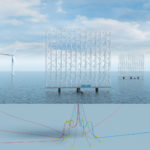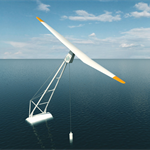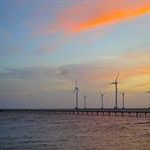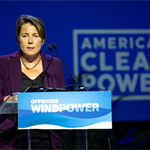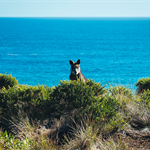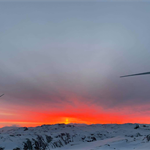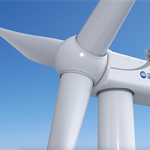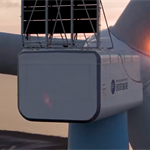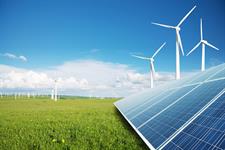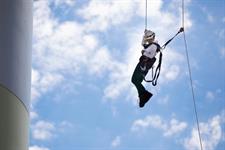Floating multi-rotor wind prices ‘to compete with fixed-bottom’
Energy Disrupter
Norwegian companies Wind Catching Systems and Aibel have said they will work together to achieve electricity generation from floating offshore wind at fixed-bottom prices by as early as next year.
The two companies are taking steps to commercialise a new technology for floating offshore wind farms that promises to increase efficiency while reducing acreage and production costs.
Their Wind Catching concept, which is being developed in collaboration with the Institute for Energy Technology (IFE), is a floating multi-turbine technology consisting of one hundred and seventeen 1MW turbines in a frame 350 metres wide and 300 metres tall.
Each frame will be placed on a semi-submersible floating platform (see below) that can be aligned to better capture the wind.

Wind Catching Systems CEO Ole Heggheim told Windpower Monthly that it envisages several of these structures being installed in a wind farm, with typical projects featuring 5-10 such structures.
The partners claim each Wind Catching unit will be as efficient as conventional offshore wind turbines. It claims to cut acreage use by more than 80% and increase efficiency significantly in comparison with conventional floating offshore wind farms.
Heggheim added that the Wind Catching system would be able to operate in much higher winds than conventional offshore wind turbines.
The technology will have a design life of 50 years, lower maintenance costs than today’s floating offshore wind solutions, and improve sustainability through greater recycling and reuse of turbine blades, lower use of marine resources and fewer CO2 emissions from installation and maintenance, the developers claim.
Heggheim said the partners believe their solution could have capital costs well below those of a similar capacity of conventional offshore wind turbines, while operations and maintenance costs would be fairly similar.
They will outsource manufacturing of the individual turbines and floating solution, he added. “It opens up a lot of opportunities for new companies to become competitive in the wind industry,” he told Windpower Monthly.
To remove a faulty turbine for repair and replacing, technicians would need to shut down individual rotors close to the broken unit for a few hours, but the remaining rotors could stay in operation, he added. Technicians would access individual turbines with a built-in elevator, removing the need for specialised cranes or vessels, Heggheim told Windpower Monthly.
The partners aim to complete the technical testing and verification this year and then offer the technology as a commercial solution in 2022. They have worked on the technology for several years and have patented the concept, Heggheim added.
“Our goal is to enable offshore wind operators and developers to produce electricity at a cost that competes with other energy sources, without subsidies,” said Ole Heggheim, CEO of Wind Catching Systems.
“Simply put, we will deliver floating offshore wind at the costs of bottom-fixed technology solutions, which provides great opportunities on a global basis for the Norwegian supplier industry.”
Wind Catching Systems is owned by Norwegian companies Ferd and North Energy, and supported by national development bank Innovation Norway.
“Wind Catching has significant competitive benefits compared to conventional floating offshore wind technologies and we see great opportunities for the Norwegian supplier and export industry,” said Erik Bjørstad, Investment Director at Ferd.
Rachid Bendriss, Investment Director at North Energy, added: “With our technology, offshore wind operators and developers will achieve the production costs that they hoped to reach in 2030-2035 in a shorter time frame.”


